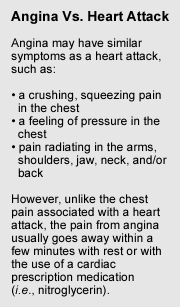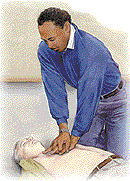Heart Disease
 Heart Disease is one of the biggest killers in the Western World, which can lead to heart attacks, angina and possibly death. There are many factors which cause Heart Disease and they can be broken into Changeable factors and Unchangeable. Changeable factors are ones we have control over. Unfortunately we cannot change the unchangeable factors, so if your a Irish male over 50 with a family history of heart problems, you have high risk of having Heart Disease.
Heart Disease is one of the biggest killers in the Western World, which can lead to heart attacks, angina and possibly death. There are many factors which cause Heart Disease and they can be broken into Changeable factors and Unchangeable. Changeable factors are ones we have control over. Unfortunately we cannot change the unchangeable factors, so if your a Irish male over 50 with a family history of heart problems, you have high risk of having Heart Disease.
| Unchangeable Factors |
Changeable Factors |
R - Race
A - Age
S - Sex
H - Hereditary |
- Obesity
- Lack of Exercise
- Smoking
- High Blood Pressure
- Stress
- Diabetes
|
Heart Attack
 It most commonly occurs when the blood supply to part of the heart is suddenly obstructed due to a blockage. It is very serious and can cause cardiac arrest.
It most commonly occurs when the blood supply to part of the heart is suddenly obstructed due to a blockage. It is very serious and can cause cardiac arrest.
- Signs & Symptoms:
- A dull chest pain that can radiate to the jaw and the left arm.
- Shortness of breath.
- Can feel like severe indigestion.
- "Ashen" skin and blueness of lips.
Treatment: Reassure the casualty and place them in a half sitting position to ease the pressure on the heart. Call for an ambulance and constantly monitor and record the casualties vital signs (Pulse and breathing rate). If they have any medication help them to take it. If the pain persists and they are fully conscious give them one tablet of ordinary Aspirin to chew.
Angina
This is the narrowing of an artery that can be brought on by exertion but is usually relieved by rest. People with a history of angina usually carry a spray (Glyceryl Trinitrate) that they spray under their tongue to relieve the attack.
Treatment: Get the casualty to rest in a comfortable position and reassure them. If they have any medication help them to take it. If the pain persists call an ambulance, and suspect a heart attack.
Chain of Survival

The chain of survival show the essential links in trying to save a persons life. It shows that survival of a cardiac arrest patient depends on a series of critical interventions. If any of these critical actions is delayed or neglected survival is unlikely.
- Early Accesses- The first intervention is to get to the patient as soon as possible and to call an ambulance.
- Early CPR- You must then commence CPR to artificially keep the person breathing and some blood circulating.
- Early Defibrillation- As you have already called an ambulance advanced medical help should come and use a defibrillator.
- Early Advanced Care- This is specialised treatment to stabilise the casualties condition quickly and efficiently.
Each link is as important as the others and the casualties chance of survival is greatest if you follow those steps.
Cardio Pulmonary Resuscitation
 This is the skill necessary to artificially provide circulation of blood to the brain and air to the lungs in order to prevent damage to the brain. It is done till medical help arrives.
This is the skill necessary to artificially provide circulation of blood to the brain and air to the lungs in order to prevent damage to the brain. It is done till medical help arrives.
It is only ever preformed on someone who is
- Unconscious
- Not breathing
- No Pulse or signs of circulation
Next Lesson [Back to Top]
 Heart Disease is one of the biggest killers in the Western World, which can lead to heart attacks, angina and possibly death. There are many factors which cause Heart Disease and they can be broken into Changeable factors and Unchangeable. Changeable factors are ones we have control over. Unfortunately we cannot change the unchangeable factors, so if your a Irish male over 50 with a family history of heart problems, you have high risk of having Heart Disease.
Heart Disease is one of the biggest killers in the Western World, which can lead to heart attacks, angina and possibly death. There are many factors which cause Heart Disease and they can be broken into Changeable factors and Unchangeable. Changeable factors are ones we have control over. Unfortunately we cannot change the unchangeable factors, so if your a Irish male over 50 with a family history of heart problems, you have high risk of having Heart Disease. It most commonly occurs when the blood supply to part of the heart is suddenly obstructed due to a blockage. It is very serious and can cause cardiac arrest.
It most commonly occurs when the blood supply to part of the heart is suddenly obstructed due to a blockage. It is very serious and can cause cardiac arrest.
 This is the skill necessary to artificially provide circulation of blood to the brain and air to the lungs in order to prevent damage to the brain. It is done till medical help arrives.
This is the skill necessary to artificially provide circulation of blood to the brain and air to the lungs in order to prevent damage to the brain. It is done till medical help arrives.